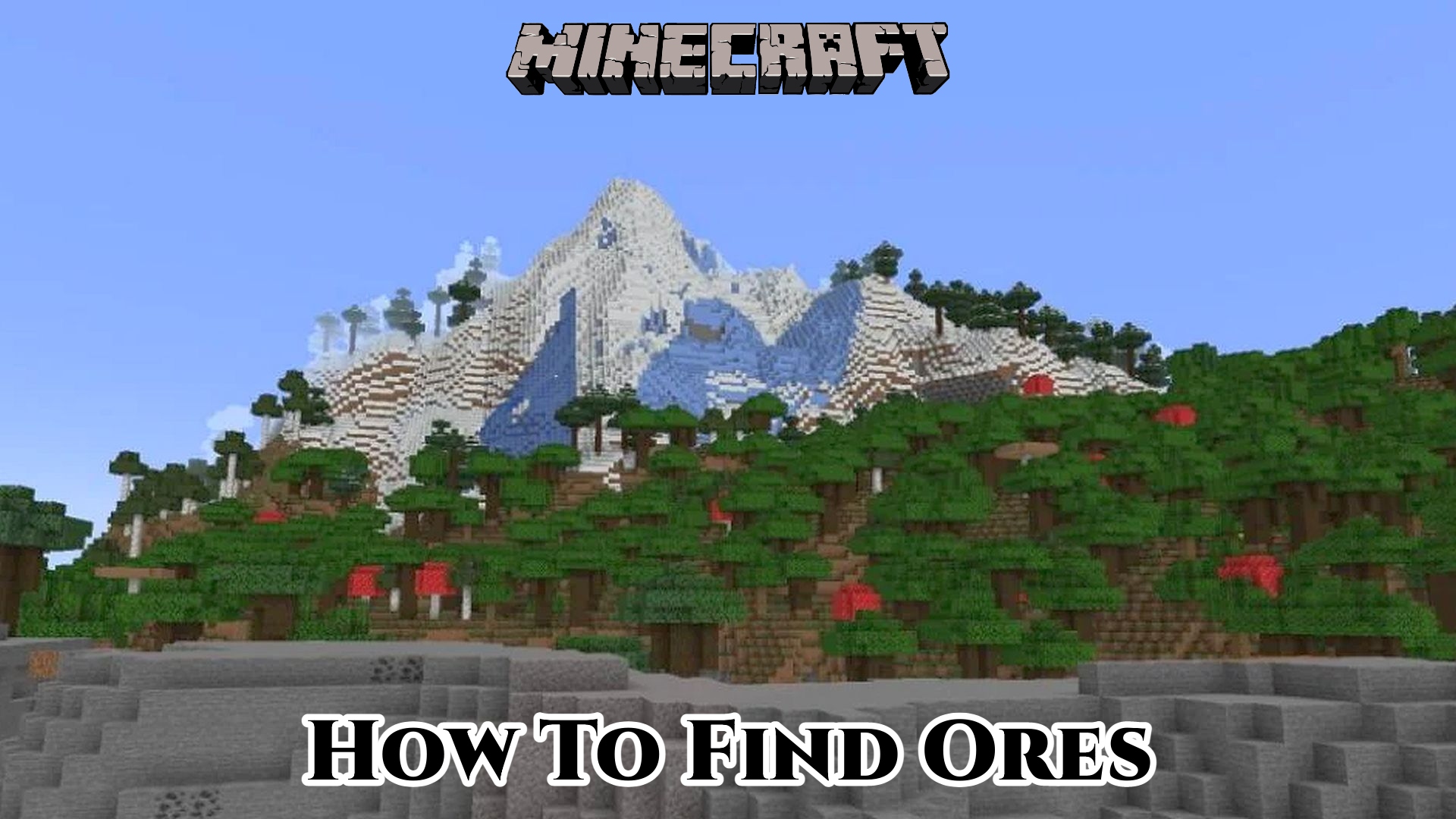How To Find Ores In Minecraft 1.18. With the Caves & Cliffs Part 2 update in Minecraft 1.18 making such big changes to how worlds produce both above and below ground, the method players found ores was going to need a major rethink. In the previous system, each ore began to generate at a particular depth and then continued to generate all the way to the bottom, allowing players to mine to their hearts’ content.
That has changed with the new system. Some ores will no longer generate below a particular depth, requiring players to mine in the appropriate layers to obtain certain resources. Some ores have a higher likelihood in specific biomes, therefore players will have to do a lot of exploring.
Table of Contents
How To Find Ores In Minecraft 1.18
Coal Ore

Coal Ore is the most prevalent ore in the game, and it can be found almost anywhere when players first begin cave diving. Those hunting for coal will need to stay above the Deepslate layer, looking in ordinary stone caverns or hilly terrain, now that they can generate at levels 320 to 0.
The distribution algorithms for this resource indicate that coal is the most prevalent at levels 95 and 136. It’s worth mentioning that both of those layers are likely to be higher than normal ground level, implying that the greatest area to look for coal is in the mountains.
Copper Ore

Copper, the game’s newest ore, was added in version 1.17 and is another reasonably easy to find ore. Layers 112 to -16 make up the whole range for copper generation. This means that players can dip their toes into the Deepslate levels for a bit of copper, but they should stay a little higher.
Copper is unique in that it spawns at a substantially higher rate in Dripstone Cave biomes, being as frequent as coal in those locations. The optimum layer to locate copper is 48, regardless of whether the player is in a Dripstone Cave or not. This means that players won’t have to go too deep below the surface to find them.
Iron Ore

Iron is likely to be the material of choice for the majority of the mid-game. Armour should be obtained as soon as possible, as they will keep the player safe until diamonds can be found. Thankfully, it has the broadest range of all ores, generating values ranging from 320 to -64, which covers the entire height of a Minecraft world.
However, it not evenly distributed over that space, and it favours the biggest mountains, which is surprising. Layers 232 and 15 are the two layers with the highest concentrations of iron. Going so deep won’t be too difficult for most gamers, but those fortunate enough to live near some really big mountains will be in luck.
Lapis Lazuli Ore

Lapis Lazuli a strange material that used for both dyeing and enchantment, yet it extremely scarce. It generates in equal proportions in ordinary caverns and Deepslate caves, from layer 64 down to Bedrock. However, it is uncommon in such locations.
In most cases, the algorithm used to generate it makes it only slightly more frequent than gold. Those looking for it especially should look only on the Deepslate layer’s cusp, at -1. Players may, however, better suited moving a little higher. While Stone is slightly less frequent than Deepslate. It can mined much faster, making it more efficient overall, especially when combined with an efficiency enchantment.
Redstone Ore

Redstone one of the most prevalent ores found in the lowest depths of Minecraft worlds, and it’s useful for all kinds of wacky contraptions and complex devices. It begins generating at layer 16 and continues until it reaches Bedrock.
Going as deep as possible when looking for the most common layers is the best strategy. With each layer below -32, redstone becomes more prevalent, so mining about -59 will be the best option. While it is theoretically more prevalent deeper, Bedrock begins to spawn at level -60 and below, making mining around it considerably more difficult.
ALSO READ: Where To Find Diamonds In Minecraft 1.18 Bedrock
Gold Ore

Gold, the typical gleaming object that everyone covets, has a finite amount of applications in Minecraft. When it comes to tools and armour, it’s practically useless; nonetheless, the Nether’s Piglins will gladly take it off players’ hands in return for some goodies.
Under normal conditions, gold generates from layers 32 to 64, with layer -16 being the most prevalent. When you’re in a Badlands biome, however, your chances of finding gold skyrocket. Gold generates from level 256 to level 32 in that biome before transitioning to its standard generation. Mining anywhere in a Badlands biome is the way to go because it’s equally common all the way up.
Emerald Ore

Emeralds are rare in veins and are required for trading with Villagers. Getting Emeralds is normally easier when done through Villager trading, but this could give people a good start. This resource special in that it can only be found in Mountain biomes. Which have gratefully increased in size in this version.
Emeralds will grow from layer 320 (the very top of the earth) to -16 in a mountain biome. Unlike other ores, though, they produce significantly more as players progress higher in the globe. While this technically makes layer 320 the greatest area to look for them, a mountain cannot generate that high, therefore layer 236 is the best place to look for these green jewels.
Emerald Ore

Diamonds are the best conceivable mineral that can found in the Overworld, and they are the beauty that everyone seeks. Diamonds and the act of discovering them have become iconic in Minecraft. And players will glad to learn that locating them has gotten a little bit easier with this update.
Diamond’s generation resembles Redstone’s generation, perhaps on purpose. It begins generating at layer 16 and continues until it reaches Bedrock. It also becomes increasingly frequent as you progress deeper, though nowhere near as common as Redstone. To avoid Bedrock getting in the way, the optimum layer to look for it is -59, although if players are lucky enough to uncover one of the new enormous caverns, they will likely find many veins of Diamond visible in the walls.




